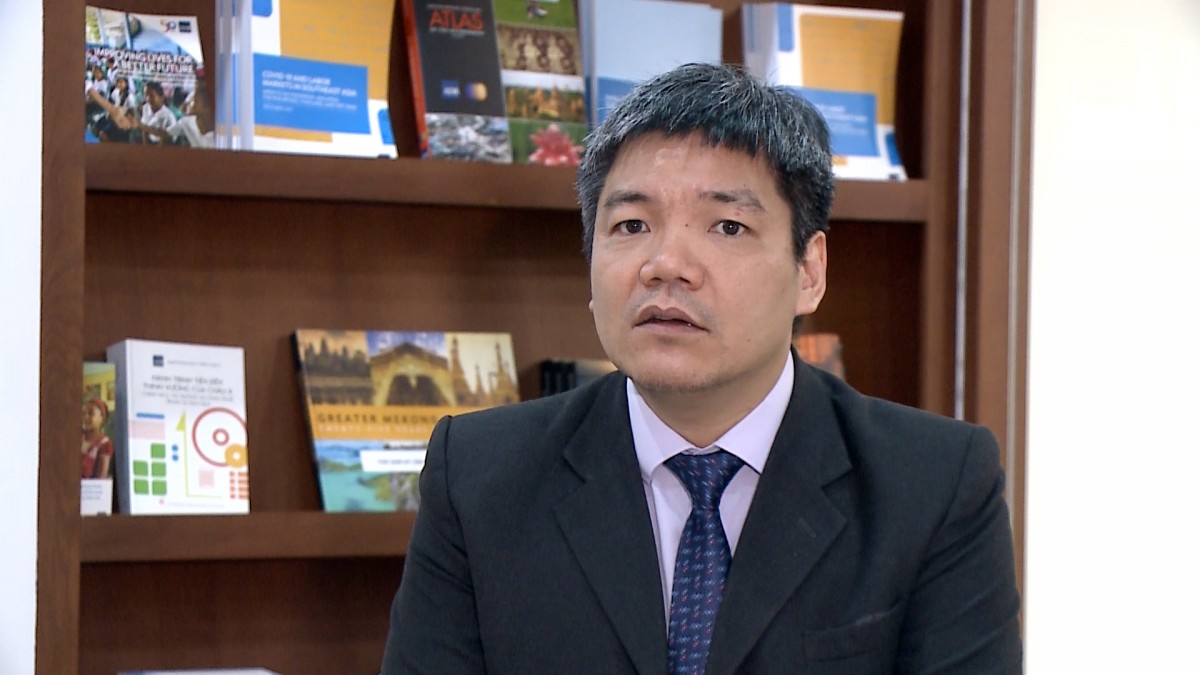Public investment key to Vietnam's growth amid global trade uncertainty: Expert
On April 10th, U.S. President Donald Trump announced a complete three-month pause of all the reciprocal tariffs on all of the country’s trading partners, including Vietnam. While negotiations remain possible, Vietnam must prepare diverse growth strategies in response to potential shifts in global economic dynamics.
Nguyen Ba Hung, Chief Economist at ADB Vietnam, noted that it is still too early to accurately quantify the impact of tariffs on Vietnam’s economic growth, as the situation remains fluid and key details are yet to emerge.
He added that Vietnam’s competitiveness depends not only on tariffs but also on a wide array of factors. A holistic perspective is therefore essential when assessing the potential effects of new trade policies.
 |
| Nguyen Ba Hung, Chief Economist of Asian Development Bank (Photo: media.chinhphu.vn) |
Global trade tensions pose risks to Vietnam’s export-oriented sectors
According to Hung, rising global trade tensions could weigh on Vietnam’s export-driven manufacturing sector. The resurgence of protectionist policies under the current U.S. administration, combined with escalating geopolitical conflicts, could dampen global demand—particularly for countries running large trade surpluses with the United States.
The introduced U.S. tariff policy could also temporarily disrupt foreign direct investment (FDI) inflows, as investors pause to reassess market conditions. However, Hung emphasized that foreign investors generally adopt a long-term outlook, and any slowdown in FDI disbursement is likely to be short-lived.
External uncertainties—including rising tariffs, retaliatory measures, the prolonged Russia–Ukraine conflict, and instability in the Middle East—pose further challenges to global economic growth in the short to medium term. In addition, slowing growth in the U.S. and China—two of Vietnam’s largest trading partners—could cast a shadow over the country’s economic prospects.
Despite these headwinds, ADB forecasts Vietnam’s economy to grow by 6.6% in 2025 and 6.5% in 2026. Key growth drivers will include strong FDI inflows, stable retail sales, and a booming tourism sector.
FDI commitments reached an impressive $10.98 billion in the first quarter of 2025, marking a 34.7% year-on-year increase. However, the impact of U.S. tariffs on FDI flows will take time to fully materialize, as investors evaluate Vietnam’s competitiveness relative to peers like India, Bangladesh, Malaysia, and Indonesia.
Nonetheless, Asia remains the world’s economic engine, and Vietnam continues to position itself as a dynamic regional hub. Deeper integration with regional economies could help Vietnam mitigate the impact of U.S. trade measures.
Hung expects Vietnam’s service sector to grow by 7.2% in 2025, fueled by rising domestic and international tourism and advancements in technology industries. Nearly 4 million international tourists visited Vietnam in the first two months of 2025—a 30.2% increase from the previous year—thanks to streamlined visa policies, tourism promotion campaigns, and global recognition.
Retail sales are also expected to rise, supported by fiscal and monetary stimulus measures. In February 2025, retail sales grew 9.4% compared to 2024. However, challenges persist: 67,000 businesses ceased operations in the first two months of 2025, up 7% from the same period in 2024, reflecting pressures on the private sector.
Strengthening domestic demand is essential
According to Hung, tariffs present not only challenges but also opportunities.
“Strengthening the domestic market is critical to enhancing the economy’s resilience against external shocks. Stimulus packages to support household consumption, along with policies aimed at improving product quality, can help promote a genuine preference for locally made goods.” - Hung explained.
The expert also stressed the importance of diversifying export markets. In light of rising protectionism, accelerating the implementation of existing free trade agreements (FTAs) and expanding exports to markets such as the UK, EU, and regional economies like South Korea can solidify Vietnam’s role in Asia’s economic core.
Public investment, Hung added, remains a vital lever for stimulating economic activity. Recently, Vietnam’s National Assembly has approved a public investment budget of $36 billion for 2025—1.5 times higher than in previous years. However, disbursement in Q1 2025 fell short of expectations, highlighting the gap between policy goals and implementation.
Hung stressed that maintaining macroeconomic stability, protecting vulnerable populations, and preserving jobs remain Vietnam’s top priorities in the future, and additional fiscal stimulus may be needed to support domestic demand. Broader measures, such as income tax cuts, reduced fees, and expanded social spending, should also be considered.
The recent landmark credit package worth VND 500 trillion ($20 billion) targeting science, technology, innovation, and strategic infrastructure, according to Hung, is proof of Vietnam government’s proactive stance in addressing tariff escalation risks. These strategic sectors are seen as vital to transforming Vietnam’s growth model, fostering innovation, and seizing new opportunities in what policymakers call the “New Era”—a period of national resurgence and forward momentum.
“By increasing public spending on infrastructure, technology, and innovation, Vietnam aims to bolster business competitiveness and attract more FDI. While this is a promising direction, its success hinges on efficient implementation and effective policy execution.” - Hung explained.
Article URL: https://ven.congthuong.vn/public-investment-key-to-vietnams-growth-amid-global-trade-uncertainty-expert-57282.html
Print ArticleCopyrights of Vietnam Economic News, All rights reserved VEN.VN | VEN.ORG.VN
